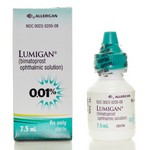Moisturizing eye drops are an ophthalmic preparation based on distilled water. It is close in composition to human tears. Such eye drops compensate for the lack of natural tears, increase the degree of corneal moisture and improve the gliding of the eyelids over the eyeball. The usage of moisturizing eye drops relieves the symptoms of dry eyes, eliminates the discomfort that can be caused by wearing contact lenses.
Today the choice of moisturizing eye drops is quite wide. These drugs are produced by many well-known brands. However, not every means is right for you, so be sure to consult an ophthalmologist before buying these eye drops.
Specialist in the selection of drops will take into account the individual composition of the tear fluid of each patient, the tendency to allergic reactions, the necessary frequency of eye drops usage, the compatibility of the drug with contact lenses.
Succinic and hyaluronic acid in the composition of moisturizing eye drops
Manufacturers of ophthalmic drops to moisten the cornea often include natural ingredients such as hyaluronic or succinic acid in their preparations.
Hyaluronate has the natural ability to attract and retain water molecules. For this reason, it is considered one of the best moisturizing ingredients and is present in many eye drops. Hyaluronic acid provides deep and long-lasting hydration of the cornea, due to which drops help to get rid of dryness and irritation, to remove redness and eye fatigue. Also, hyaluronate is able to activate the regeneration processes in the eye tissues, due to which such drugs heal microscopic corneal damage. They are recommended for people who are forced to work in hazardous production.
Drops based on hyaluronic acid have a viscous texture, thereby keeping the cornea longer. They create a thin film on the eyeball surface that protects against damage when wearing contact lenses, gives the eyes high-quality hydration and comfort.
Succinic acid is moisturizing eye drops. This component has not only moisturizing properties but also antiviral, regenerative, restorative effect. It helps to improve cellular “breathing”. Thanks to succinic acid, the cells of the cornea absorb oxygen more quickly and better, which is very important for maintaining healthy eyes, especially when wearing contact lenses.
Succinic acid drops are recommended for people with the sensitive cornea. Such a drug gently affects the eyes and practically does not cause allergic reactions.
In addition to preparations with hyaluronic and succinic acids, manufacturers also produce a large number of good drops, which are based on other active ingredients. These ophthalmic drops also effectively cope with the function of moisturizing and protecting the cornea, but they need to be put in more often as they quickly evaporate from eyeball surface.
Moisturizers based on herbal ingredients
Today, among the huge selection of drugs, drops with the addition of herbal ingredients can be found. An example of such eye drops is the popular moisturizing drops from well-known brands. The solution is used to moisturize and protect the eyes. It contains chamomile and mallow extracts.
Ophthalmologists often prescribe such a drug to people who practice long-lasting contact lens wearing, or to those whose eyes do not produce enough tears. Also, indications for use can be a long stay in the wind, in a dusty room or in other adverse environmental conditions.
For those who spend a lot of time at the computer, drops with herbal extracts will provide reliable protection from fatigue and discomfort of the eyes. The solution maintains the natural tear film in a stable condition, helps the eyes adapt to contact lenses’ wearing. They have an anti-inflammatory effect.
Due to the soft composition, such drops are recommended even for children, because an allergic reaction to them is extremely rare.
Antibiotic eye drops composition
If the patient has been diagnosed with a virus, then the ophthalmologist will recommend drops that contain components able to suppress virus reproduction. Also, these drugs can have a regenerating and soothing effect on the conjunctiva. Independent selection of drops is not allowed. In adenoviral conjunctivitis, some drugs are prescribed, in case of enterovirus – others. The following eye drops components have proven to be highly effective:
- Interferon, aimed at suppressing the virus, and diphenhydramine, which effectively relieves itching and burning. The duration of treatment is usually no more than a week. During the first days, it is recommended to put in the eye no more than 6 times. In the following cases, the course requires no more than 3 times application. Drops have no contraindications. The exception is individual intolerance to the components of the drug.
- These eye drops contain para-aminobenzoic acid, which is an inducer of endogenous interferon. It increases the number of proteins secreted by cells in the body in response to viruses. Eyelid edema is effectively eliminated – one of the most common symptoms of eye diseases. The drug has virtually no contraindications. These eye drops can be used to treat children, but only with the doctor consent. The duration of treatment is determined by the ophthalmologist after examining the patient. The drug is recommended to be used after clinical recovery – 3 times a day for 5 days.
- Florenalum has a pronounced antiviral effect. It can suppress the reproduction of viral cells in the tissues of the visual organs. The advantage of the drug is that it has only local effects. It is not absorbed into the bloodstream. The duration of treatment is prescribed by an ophthalmologist. In some patients, the drug may cause side effects, such as itching and burning in the eye area.




